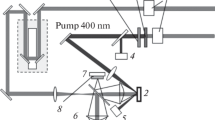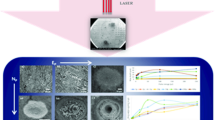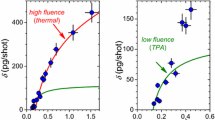Abstract.
Ultrashort-pulse laser ablation (τ=130 fs, λ=800 nm, repetition rate 2–20 Hz) of titanium nitride was investigated for laser fluences between 0.3 and 4.5 J/cm2 using the direct focusing technique in air. The influence of the laser pulse number and the peak fluence was investigated by means of several surface analytical techniques (optical microscopy, dynamic friction atomic force microscopy, scanning Auger electron microscopy and small-spot electron spectroscopy for chemical analysis). The correlation of the results about optical, physical and chemical properties of the irradiated areas allows us to propose a simple oxidation model, which explains different observed phenomena associated with surface damage such as mound formation and crater widening and clarifies the incubation behavior reported earlier for this material.
Similar content being viewed by others
Author information
Authors and Affiliations
Additional information
Received: 8 May 2000 / Accepted: 9 May 2000 / Published online: 13 September 2000
Rights and permissions
About this article
Cite this article
Bonse, J., Sturm, H., Schmidt, D. et al. Chemical, morphological and accumulation phenomena in ultrashort-pulse laser ablation of TiN in air . Appl Phys A 71, 657–665 (2000). https://doi.org/10.1007/s003390000585
Issue Date:
DOI: https://doi.org/10.1007/s003390000585




